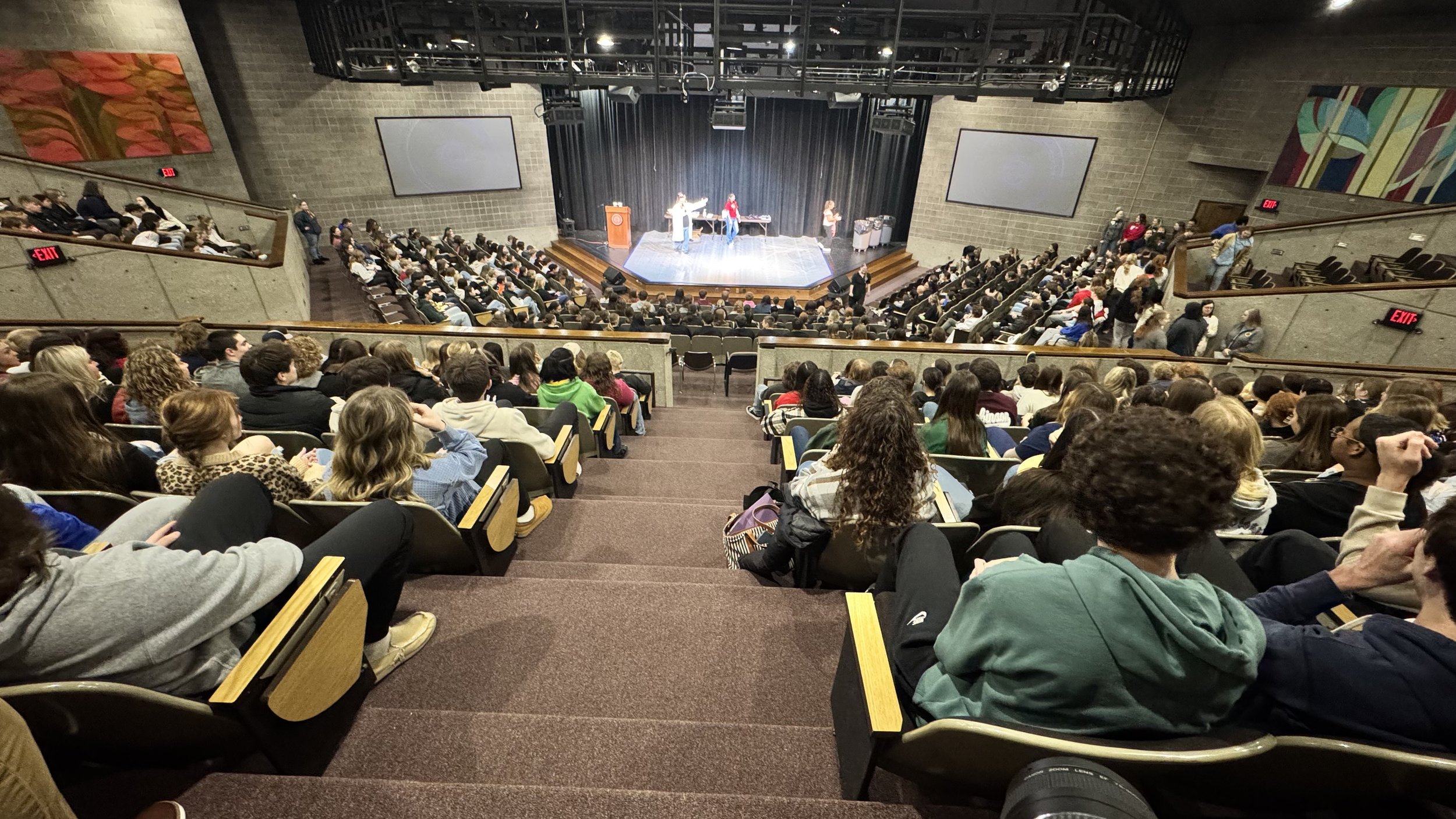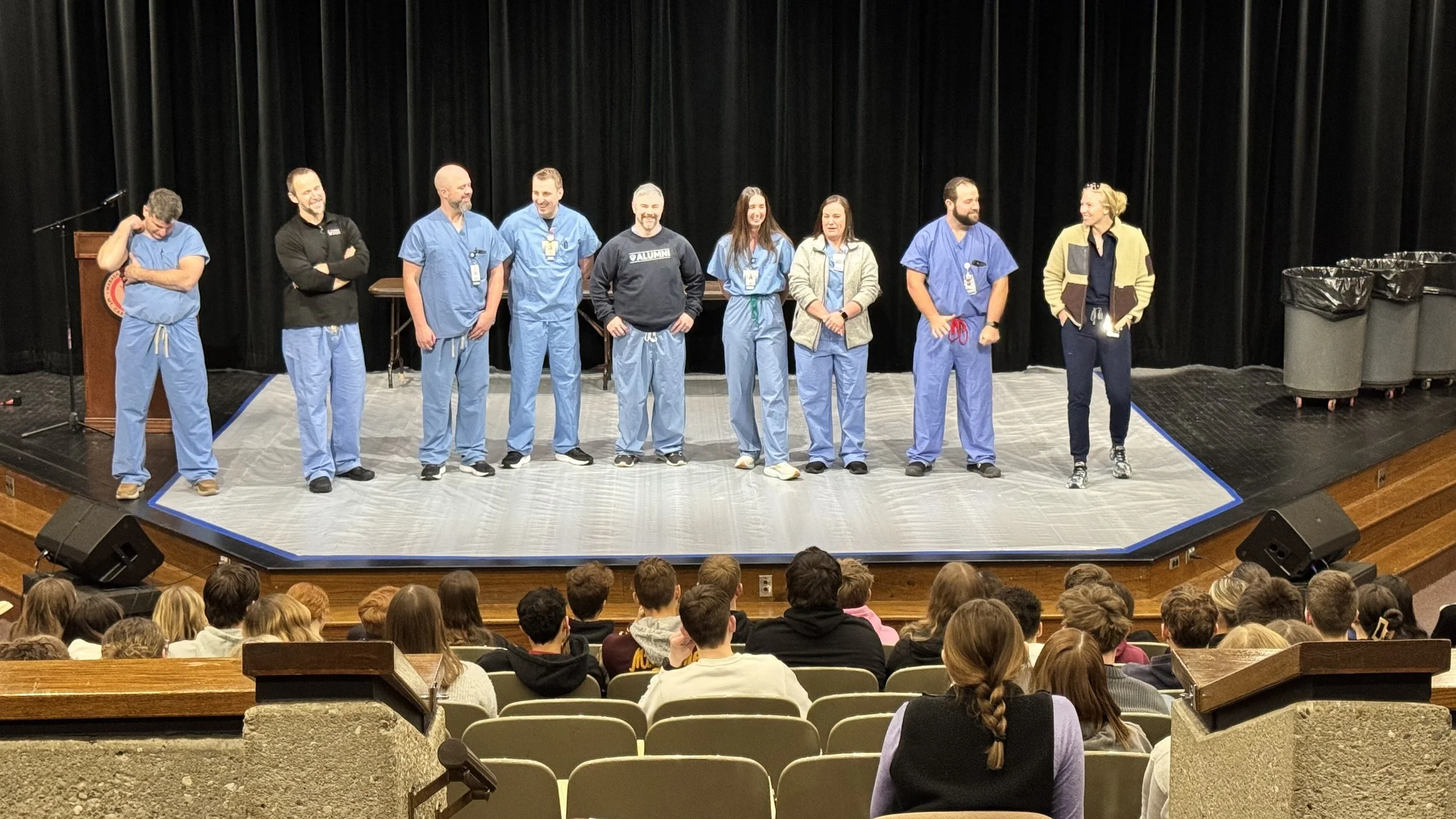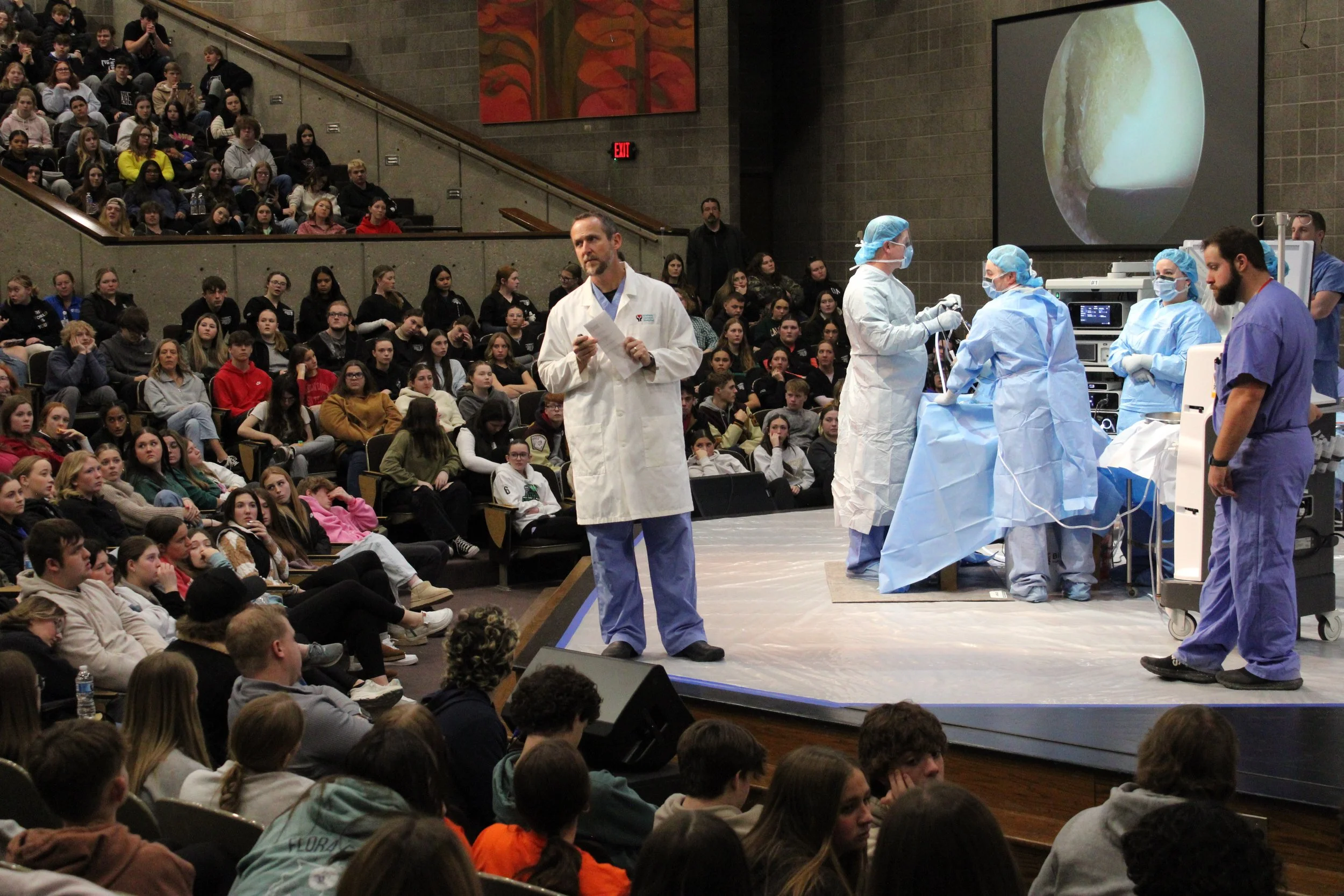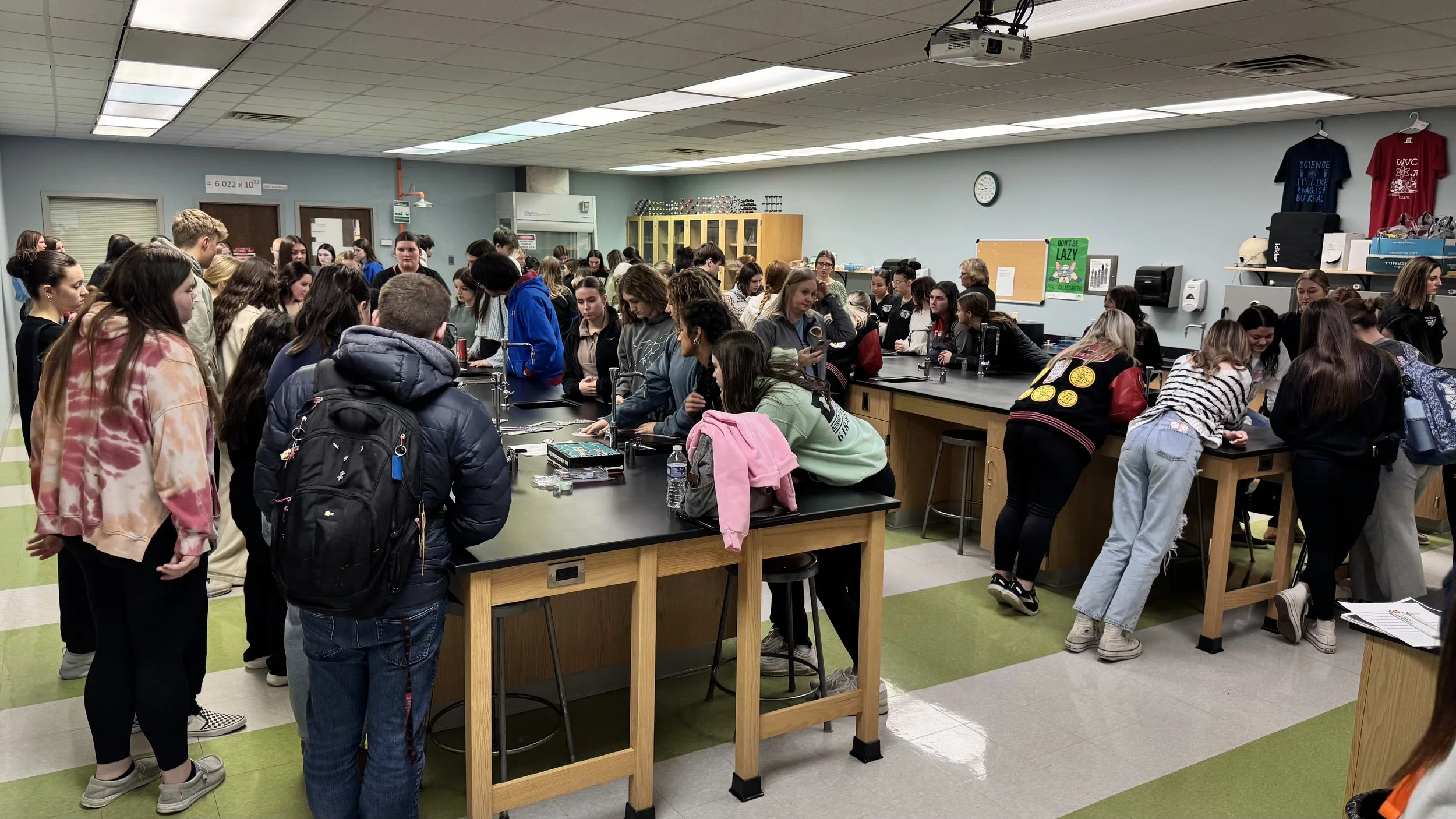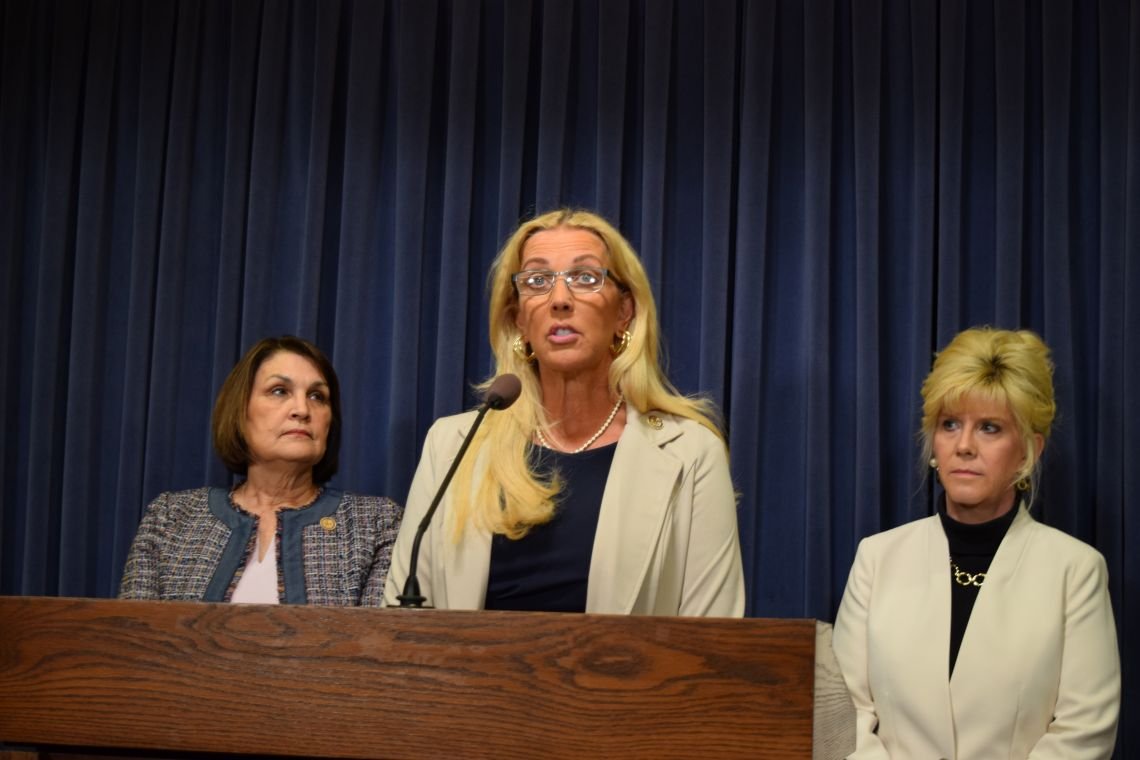Annual educators’ survey showed lack of applicants, salary issues and poor working conditions among main causes
By Jessie Nguyen, Jordan Owens and Medill Illinois News Bureau
SPRINGFIELD – From hiring retired educators to adjusting class offerings, Illinois schools are relying on a variety of short-term, innovative measures to cope with a prolonged and critical statewide teacher shortage.
The most recent survey of education leaders from the Illinois Association of Regional Superintendents of Schools, or IARSS, shows overall shortage percentages similar to pre-pandemic levels, yet school districts are still struggling to ease less-than-optimal student-teacher ratios.
“For our school districts throughout the state, (the teacher shortage) is not universally created everywhere. It looks different in every place, but I think everybody believes – or at least feels like – it's a challenge,” said Gary Tipsord, IARSS Executive Director. “So let's accept that as a reality, and then that will allow us to best solve this sustainably.”.
This is the eighth year the IARSS has partnered with Goshen Consulting to produce the report.
Of more than 750 schools surveyed this year, 87% said they have a “minor, serious or very serious (shortage) problem.” The report also found that 91% of schools said they struggle to hire substitute teachers, while 65% said more than half of teacher candidates don’t have the proper credentials for the teaching positions they’re applying to.
“I think the biggest impact that (the shortage) has is on teacher morale. If there aren’t enough people to do all of the jobs, then those of us who are committed and dedicated to what we do automatically do more,” said Gretchen Weiss, a special education teacher at Macomb Middle School in West Central Illinois.
Illinois had roughly 140,000 teachers for the 2023-2024 school year, according to a report by the Illinois State Board of Education. This number has grown every year since the implementation of Evidence-Based Funding, or EBF, in 2018. The student-teacher ratio was 17:1 in 2024 at both the elementary and high school levels, a steady decrease from roughly 19:1 in 2016.
The IARSS 2024-25 teacher shortage survey found that while alternative teaching methods helped districts see an increase in the number of educators, the shortage persists due to a lack of new teachers entering the profession.
School leaders surveyed said a limited applicant pool, compensation issues and “poor working conditions” are among the main causes of the shortage, though Tipsord said the term “working conditions” is broad and its meaning can vary from one respondent to another.
“When people talk about working conditions … that potentially means something different to every teacher or every district or every building,” Tipsord said. “I don’t know that we’re in a good space to truly understand that yet, and I think that’s the place where we need to continue to dig.”
Pandemic
In 2020, Illinois schools, like others across the country, were hit with temporary school closures due to the COVID-19 Pandemic.
Rachael Mahmood, a teacher at Georgetown Elementary School in Aurora and the 2024 Illinois Teacher of the Year, noted that students and teachers alike struggled with the effects of an upsurge in online learning.
“I missed my students being in the classroom, and I missed all the community of a classroom, so I was ready to return,” Mahmood said.
In the 2020-2021 academic year, administrators saw a spike in unfilled positions or low-quality hires. Budget and health concerns due to the pandemic in school districts caused a decrease in the number of educators working in K-12 schools. Though the shortage seemed to improve the following year, it has proved to be a continuing issue with shortages rising between 2022-2024.
Because of the pandemic, school districts in the state are working to return shortage rates back to pre-pandemic levels. In 2018, 85% of education leaders reported “a major or a minor issue” in filling teaching positions. This number grew by 3% in 2019.
To help relieve issues caused by the pandemic, schools across the country received an infusion of federal money called Elementary and Secondary School Emergency Relief (ESSER) funds.
Illinois saw this money distributed in three rounds over the last five years through the Coronavirus Aid, Relief and Economic Security Act; the Coronavirus Response and Relief Supplemental Appropriations Act; and the American Rescue Plan (ARP ESSER). About $7.7 million of the $8 million funds were spent, with final ESSER dollars being allocated to schools in September of this school year.
“I think what is going to be very interesting is after this year, all those ESSER dollars will have expired unless they get an extension through March of 2026,” said Tipsord. “But as those have expired, what's the landscape? And will data next year - raw data next year – look worse?”
Alternative measures
About 3,864 positions are left unfilled this school year at a vacancy rate of 2.8%, a decrease from 4,096 positions last year, or 3%.
For the 2024-2025 school year, Illinois schools filled 6,117 teaching positions with innovative alternative measures like using retired teachers, going virtual, modifying class offerings and utilizing third-party vendors to find educators. Many of those positions were in areas such as bilingual or special education, early childhood and elementary education.
At Macomb Middle School, these measures include having two Leading, Educating and Partnering in Schools, or LEAP, advocates and a “paperwork day” for special education teachers.
LEAP advocates are the school’s support staff who help with school attendance, academics and student well-being, according to the Macomb Regional Office of Education’s website. A paperwork day is when teachers take time off from school to complete an Individualized Educational Plan (IEP) outlining the special education students’ academic goals and deficits for the school year.
Weiss said in addition to teaching, she also writes IEPs for 14 of her students.
“The district hires a sub for me, and I find a quiet workspace in the building, and I can work on paperwork,” Weiss said. “That speaks to my district’s commitment to work-life balance… That’s something that my district does very well in terms of taking care to make sure that teachers have the support they need.”
This year, school districts hired about 1440 substitute teachers, including some retired teachers. To accommodate those retirees, many downstate school districts increased the number of days retired educators can work as substitutes without affecting their retirement benefits. Of the schools surveyed, 86% said this measure helped with the shortage.
“We do have one retiree that's helping us with a math vacancy right now,” said Travis. “She just retired, and she signed up right away to be a substitute. We reached out to her, and she said, ‘Absolutely,’ because she's familiar with the curriculum and the students.”
Policy recommendations
Increasing state funding for K-12 schools, investing in teacher and school leadership and helping support staff become educators are some of the recommendations school leaders mentioned in the survey as possible ways to ease the shortage crisis.
Fifty-nine percent of school leaders said EBF money allowed districts to add additional staff, while others said the teacher vacancy grants and career and technical education pathway grants can also help ease the crisis.
EBF is a school funding formula lawmakers adopted in 2017 that seeks to reduce funding gaps in the state by sending more resources to the most underfunded districts. CTE programs prepare students for high-skill, in-demand occupations like engineering or culinary arts.
In his February State of the State address, Gov. JB Pritzker reiterated Illinois’ ongoing support for K-12 education funding, including a $350 million increase in EBF and a $1.3 million increase in CTE programs. This brings the total EBF funds to $8.9 billion since the program was enacted in 2017.
Pritzker also proposed continued funding of $45 million for the Teacher Vacancy Grant Pilot Program.
“We are recipients of the teacher vacancy program. I should say that has helped us retain teachers because we were able to offer some signing bonuses for hard-to-fill positions,” said LaTesh Travis, Assistant Superintendent for Human Resources at Berkeley School District 87.
Launched in the 2023-2024 academic year, the teacher vacancy grant allowed districts to fill educator positions and offer money for education training. For the Berkeley School District, Travis says they were able to offer signing bonuses for math, special education and bilingual teachers.
Though the state has pledged its support for education funding over the past couple of years, some say there is still room for improvement.
“We understand that this budget, although compassionate, still has a long way to go when it comes to really being able to close gaps. Illinois has committed to education, and I think that has to be part of (the budget) as well,” said Jelani Saadiq, director of government relations with Advance Illinois, a nonprofit agency that promotes public education in Illinois.
Aside from funding, the report proposed more support for shortage research — to better understand what is working to ease shortages — and the implementation of Illinois Vision 2030, a five-year policy framework for state legislators and education officials to better support K-12 public education.
One of the framework’s focuses is on attracting and retaining high-quality educators through marketing campaigns, strengthening educator pathway programs and improving educators’ experience. Vision 2030 also advocates for grow-your-own programs that encourage local high school students to consider careers in education.
Mahmood said one other way to keep teachers in the workforce is through leadership, though balancing a professional’s “natural desire” to be promoted and their sense of duty can be challenging.
“Every teacher is a leader — they lead classrooms, they’re in charge of little people and they’re making all these decisions as a leader. But are we treating them as leaders?” Mahmood said. “Teaching is the only job where going up means going out of the classroom, and we need great teachers to choose to stay in the classroom.”
Jessie Nguyen is a graduate student in journalism with Northwestern University’s Medill School of Journalism, Media, Integrated Marketing Communications, and a fellow in its Medill Illinois News Bureau working in partnership with Capitol News Illinois.
Jordan G. Owens is a graduate student in journalism with Northwestern University’s Medill School of Journalism, Media, Integrated Marketing Communications, and a fellow in its Medill Illinois News Bureau working in partnership with Capitol News Illinois.
Capitol News Illinois is a nonprofit, nonpartisan news service that distributes state government coverage to hundreds of news outlets statewide. It is funded primarily by the Illinois Press Foundation and the Robert R. McCormick Foundation.

